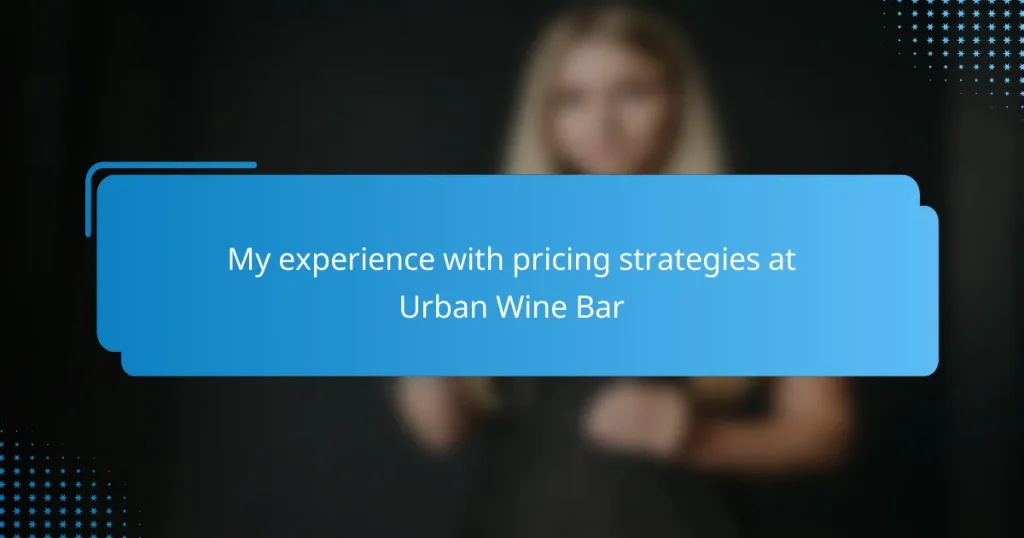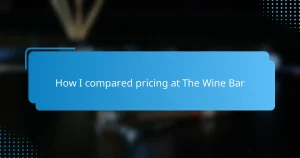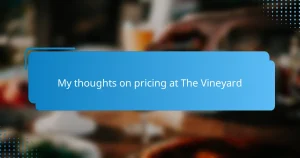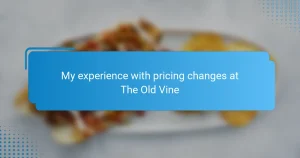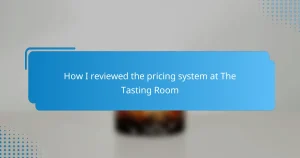Key takeaways
- Pricing strategies in wine bars balance accessibility and exclusivity, often influenced by customer perception and the overall ambiance.
- Common pricing models include mark-up strategies for rare wines, flight pricing for tasting multiple varieties, and seasonal discounts to enhance accessibility.
- The experience, ambiance, and sourcing complexities play a significant role in how prices are perceived, adding value beyond the wine itself.
- Urban Wine Bar’s dynamic pricing reflects demand and timing, leading to a unique experience where value is based on the overall enjoyment and context of the visit.
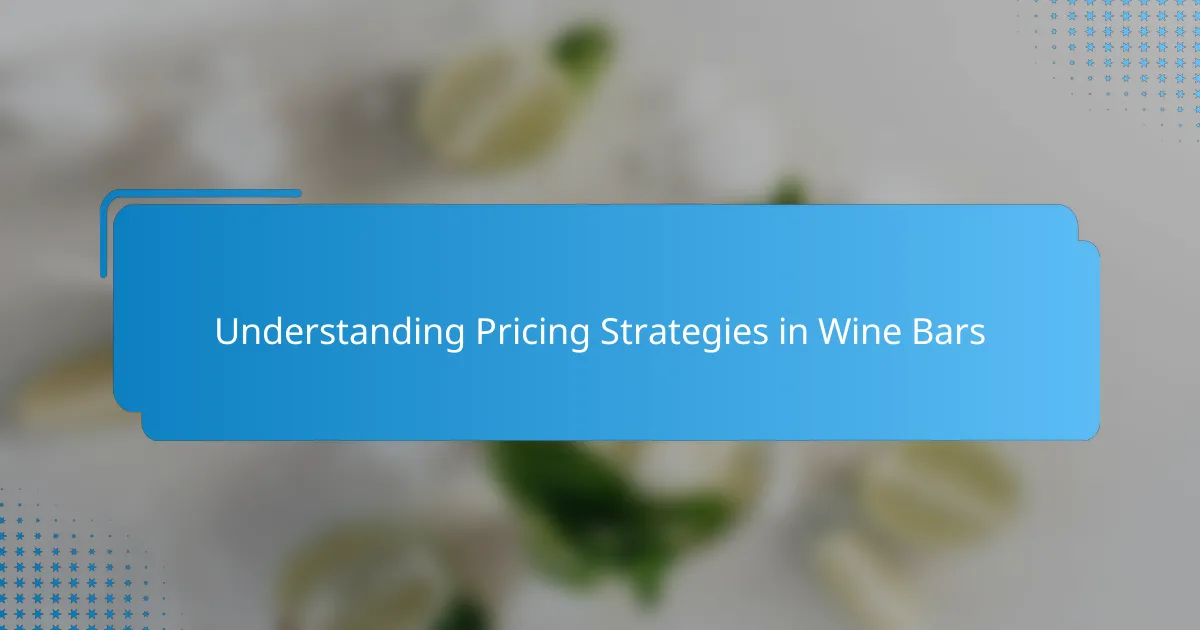
Understanding Pricing Strategies in Wine Bars
Pricing strategies in wine bars often walk a fine line between accessibility and exclusivity. I remember feeling torn the first time I noticed their markup on rare vintages—was I paying for the experience or just the bottle? It made me realize how carefully bars balance the guests’ expectations with their own business goals.
Have you ever wondered why some glasses of wine feel like a splurge while others seem like a steal? From my experience, it’s all about perception and presentation. A modest price paired with a cozy atmosphere immediately felt more inviting, and that subtle pricing cue influenced how much I was willing to spend.
What struck me most was how Urban Wine Bar used tiered pricing to cater to different moods and occasions. Whether it was a casual weekday sip or a special celebratory pour, their approach made me appreciate the thought behind every price tag—each one telling its own story about value and experience.
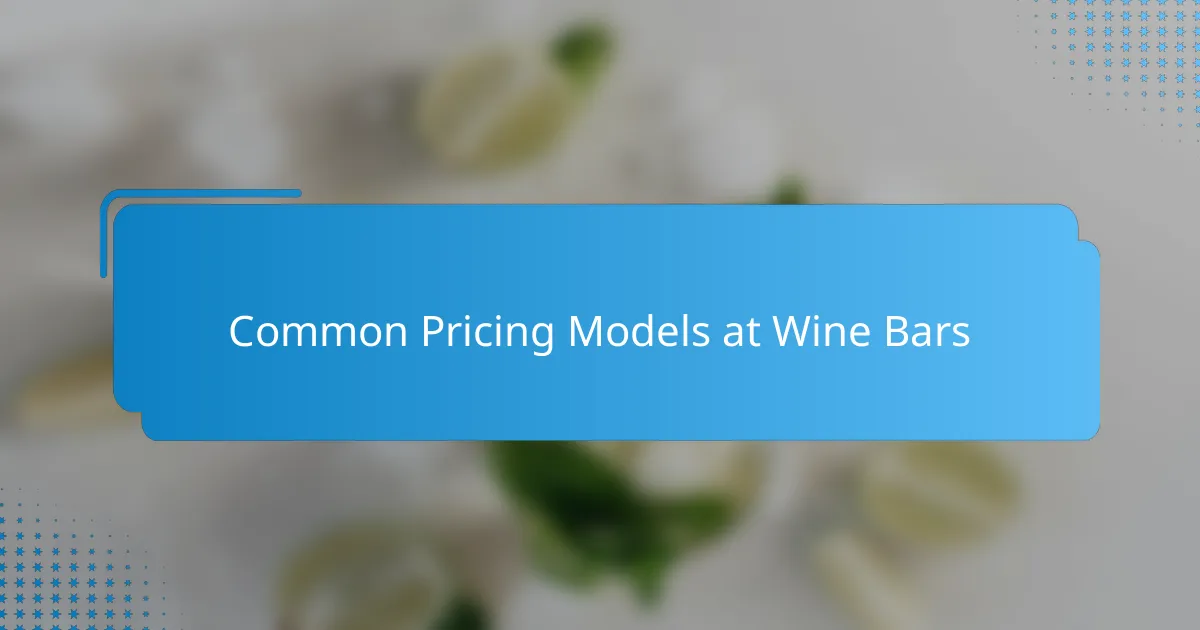
Common Pricing Models at Wine Bars
One common pricing model I’ve noticed at wine bars is the mark-up strategy, where prices are set considerably higher than retail but vary widely depending on the wine’s rarity or prestige. It made me pause once when a simple glass of pinot noir cost almost triple what I’d seen in stores—is that extra for ambiance, or the story behind the label? That question lingered with me throughout my visit.
Another approach that caught my attention was the flight pricing system, where you pay for a set of small tastings rather than by the glass. Trying a flight at Urban Wine Bar gave me an easy way to explore different varieties without committing to a full pour, and the price felt fairer because it matched the experience of discovery. It’s a clever way to balance customer curiosity and price transparency.
Then there’s the flat-rate or happy hour pricing model, something I found especially welcoming. Knowing I could enjoy quality wine at a reduced price during certain times made me feel like the bar truly valued accessibility, not just exclusivity. Have you ever planned your evening around those special deals? I certainly have, and those moments felt like little rewards rather than splurges.
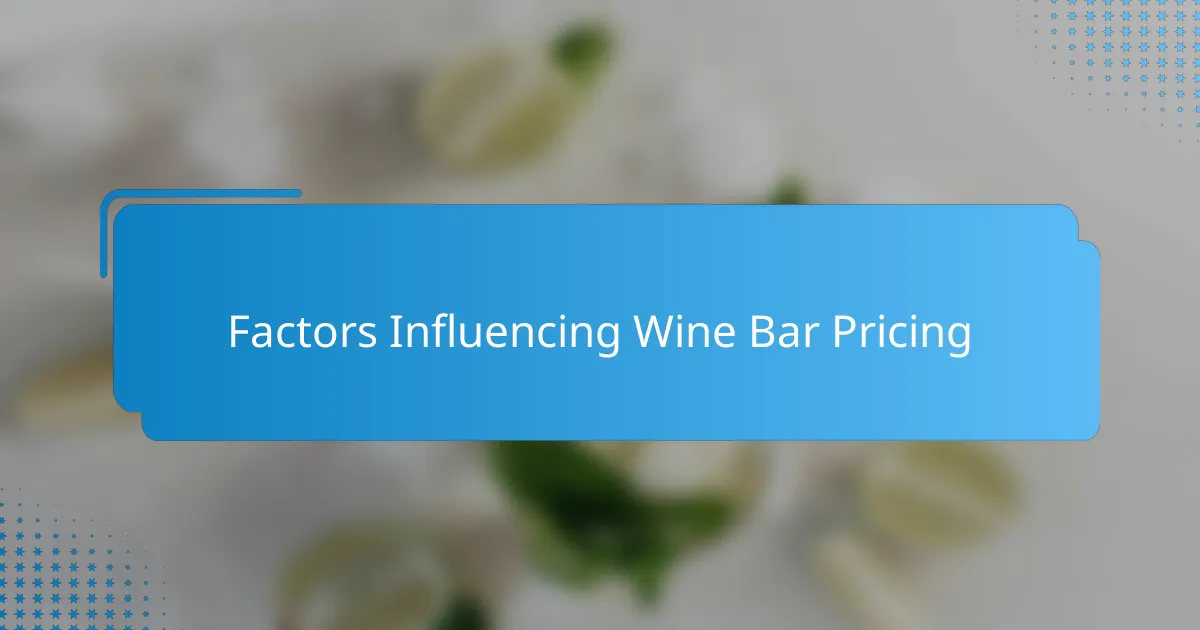
Factors Influencing Wine Bar Pricing
One key factor that shaped my perception of pricing at Urban Wine Bar was the cost of sourcing unique or rare wines. I realized that behind each higher price tag was a story—whether it was a vineyard tucked away in a remote region or a limited batch that demanded extra effort to procure. Have you thought about how much those behind-the-scenes complexities add to the final glass? To me, understanding that made the prices feel more justified.
Another influence was the ambiance and service quality, which seemed woven into the pricing fabric. At Urban Wine Bar, the cozy lighting and personalized recommendations created a sense of value beyond just the liquid in my glass. I remember thinking, “I’m paying not just for wine but for an experience that feels curated and special,” and that mindset shifted how I approached the menu.
Lastly, timing played a subtle but powerful role. Weekends and evenings came with noticeably higher prices, which, at first, seemed a bit frustrating. But then I caught myself considering supply and demand—more guests meant a livelier atmosphere and often special features. Does this mean those peak prices are really just part of the social experience? For me, that question opened a new way of appreciating how wine bar pricing adapts dynamically to the moment.
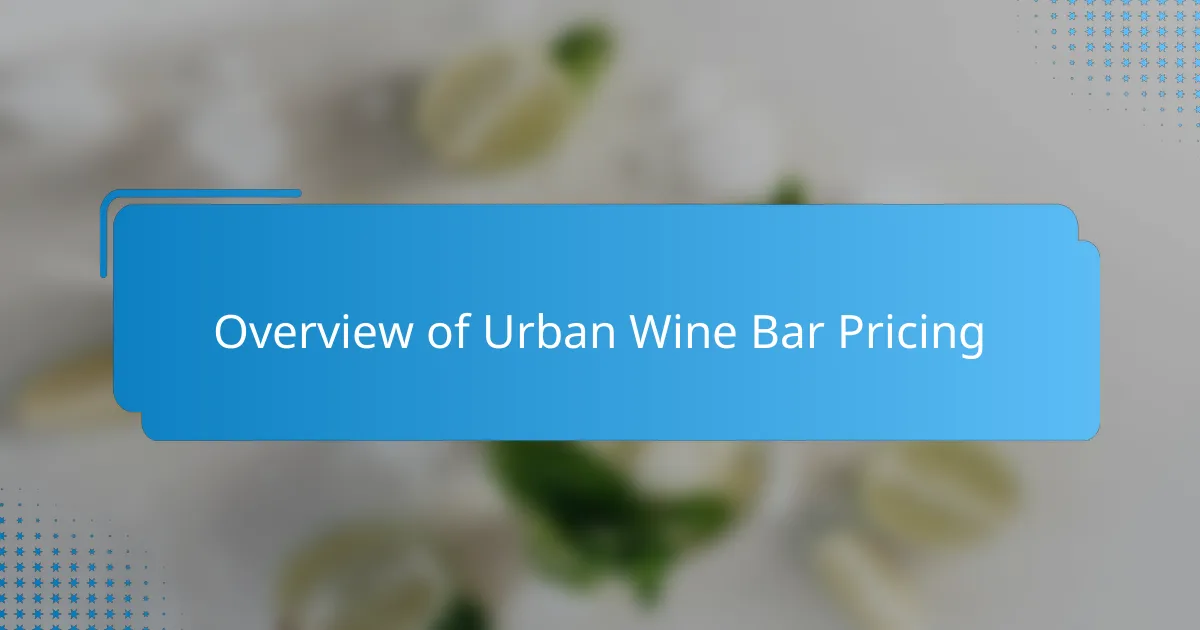
Overview of Urban Wine Bar Pricing
When I first glanced at the Urban Wine Bar’s menu, the pricing struck me as thoughtful rather than random. Each glass seemed carefully positioned—not just by type or vintage but by the kind of experience the bar wanted to offer. Have you ever noticed how some prices invite you to linger, while others hint at a special occasion?
What stood out to me was how their pricing wasn’t just about covering costs or making a profit; it felt like a story told in numbers. I could see how everyday wines were priced to encourage casual visits, while the rarer bottles carried a price that acknowledged their exclusivity. That balance made me appreciate the nuanced way pricing can shape a night out.
Interestingly, Urban Wine Bar’s approach included subtle price shifts based on timing and demand, which I initially found surprising. Was I being charged more because it was a busy weekend, or because the experience itself had intensified? Over time, I realized this dynamic pricing added a layer of excitement—reminding me that a wine bar is as much about atmosphere as it is about the wine itself.
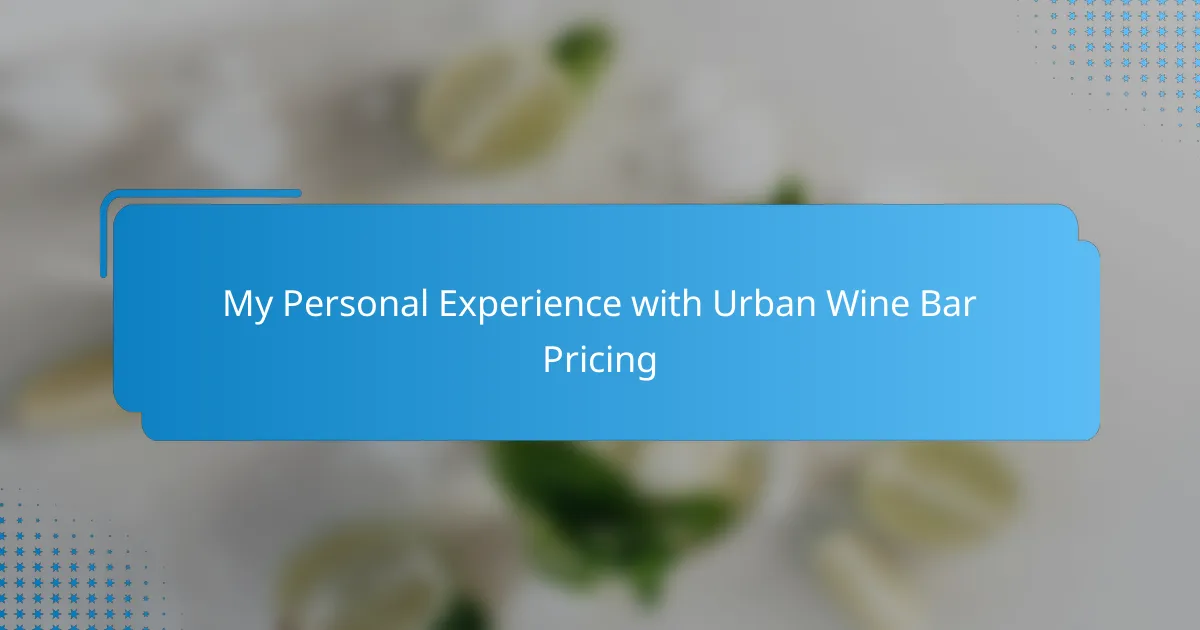
My Personal Experience with Urban Wine Bar Pricing
Thinking back on my visits, Urban Wine Bar’s pricing often felt like a personal conversation rather than a fixed rule. I recall one evening when a glass of a mid-range merlot was priced just right—comfortable enough to indulge without feeling guilty, yet still suggesting something a bit special. Have you ever had that sweet spot moment where price and pleasure just click? For me, that moment made the experience memorable.
At the same time, some of the rare vintages carried a steep price tag that made me hesitate. I asked myself: Am I paying for the wine itself, or the story and exclusivity wrapped around it? On a particular night, I took a gamble on a limited edition bottle and found that the taste and ambiance justified every penny. It reminded me how pricing can shape not just what you drink, but how you feel about that choice.
What I appreciate most about Urban Wine Bar’s pricing is its subtle adaptability. Prices shift depending on timing and demand, which initially felt frustrating—almost like a guessing game. But over time, I saw it as part of the venue’s rhythm, encouraging me to plan visits around special moments while savoring the vibe at less busy times. Doesn’t that add a layer of excitement to choosing when and what to drink? For me, it definitely does.
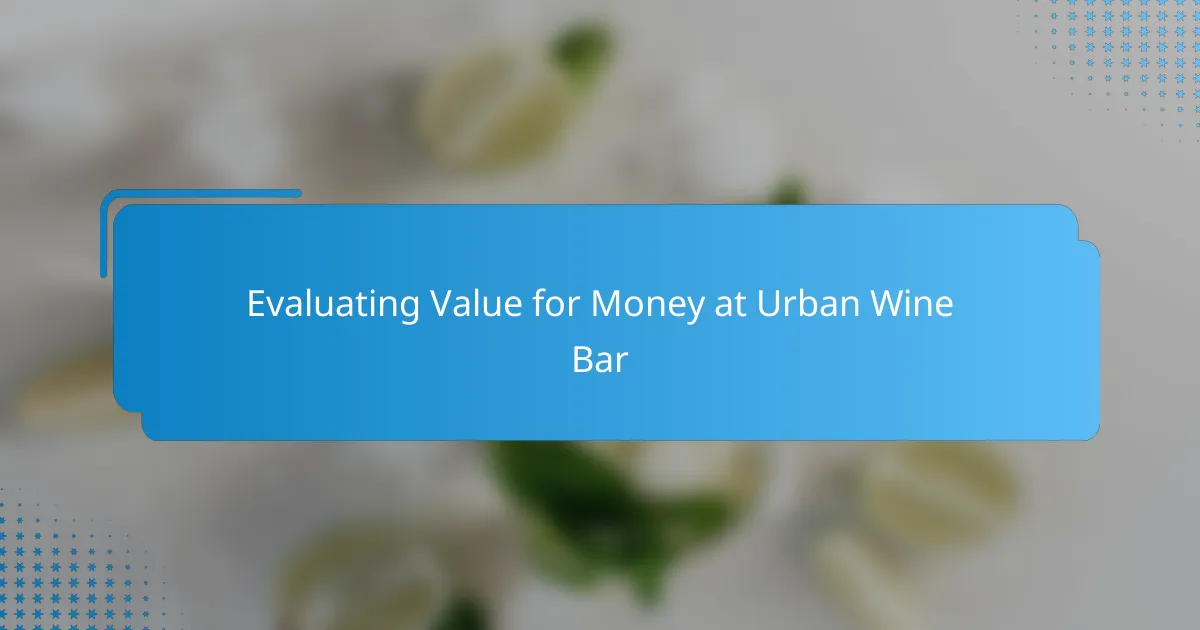
Evaluating Value for Money at Urban Wine Bar
Evaluating value for money at Urban Wine Bar felt like peeling back layers of a well-crafted story. I found myself weighing the price of each glass not just against its taste, but against the atmosphere, service, and uniqueness that came with it. Have you ever caught yourself deciding whether a pricey glass is worth it because it promises a memorable moment, not just a drink? That’s exactly the mindset I experienced here.
Sometimes, the more I paid, the more I felt invited into an exclusive world—a gamble that often paid off with rich flavors and thoughtful presentation. Yet, when I chose something more modestly priced, it didn’t feel like a compromise but rather a comfortable, rewarding discovery. Isn’t it refreshing when value isn’t about spending less but about feeling satisfied no matter the cost?
What I learned is that Urban Wine Bar’s pricing makes you an active participant in your experience. You start noticing how your mood, company, and occasion affect your perception of value. This subtle interplay makes every visit unique, which, to me, is the essence of true value for money—not just the number on the menu, but how it fits into the story of your night.
